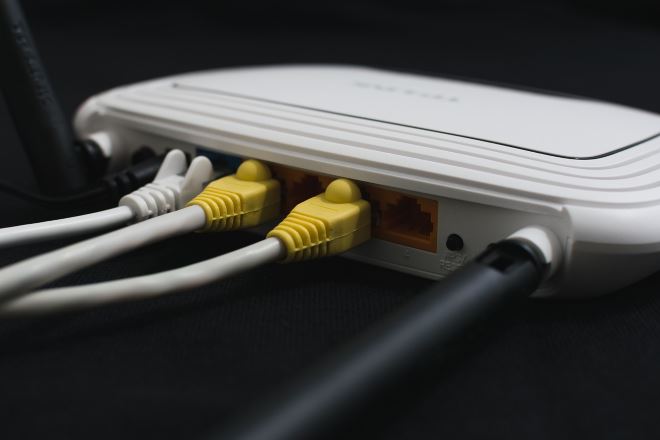Fast Home Internet for Seniors: Broadband Choices
Discover how high-speed internet can make life easier for seniors — from clearer video calls and smoother streaming to better access to telehealth and online banking. This guide explains broadband options (fiber, cable, DSL, fixed wireless), how technology improves accessibility, and whether providers like BT suit your area, so families can choose the right plan with confidence.

High-speed internet can open up new ways for older adults to connect, manage health, access entertainment, and complete everyday tasks more independently. By choosing the right type of broadband and simple, supportive technology, seniors and their families can reduce frustration, improve communication, and enjoy reliable access to services like telemedicine, video calling, and streaming.
How high-speed internet benefits seniors
A steady, fast internet connection makes routine online activities far less stressful. For seniors this means clearer video chats with family, uninterrupted telehealth consultations, faster page loads for banking and shopping, and higher-quality streaming of shows and music. Good bandwidth also supports accessibility features — larger on-screen text, screen readers, and voice assistants — which can make devices much easier to use. When comparing plans, remember that consistent, real-world performance and uptime usually matter more for everyday use than the maximum headline speed.
Broadband types to weigh up
There are several common broadband technologies, each with advantages depending on where you live and how you use the internet:
- Fiber: Typically delivers the fastest speeds and lowest delay (latency). It’s a great choice if available, especially for families with many devices or for high-quality video calls and telehealth.
- Cable: Widely available in many urban and suburban areas. Cable often provides excellent performance for streaming and routine home use.
- DSL: Runs over existing phone lines and can be perfectly adequate for basic browsing, email, and one-to-one video calls. Speeds are usually lower than fiber or cable.
- Fixed wireless / Mobile (4G/5G): Useful where wired options are limited. Performance can vary by location and signal strength, but mobile broadband can be a practical stopgap or backup option.
For households with multiple devices and regular video calling or streaming, aim for plans in the 25–50 Mbps range or higher. If multiple people stream or join video conferences simultaneously, consider higher tiers.
How technology improves accessibility and ease of use
Modern consumer devices and home networking gear make it easier for seniors to get online and stay engaged. Examples include simplified tablets designed for older users, voice-controlled assistants that answer questions or place calls, and plug-and-play devices that reduce setup complexity. Wi‑Fi mesh systems can spread coverage across larger homes so signal dropouts are less of a problem. Many routers now include guest networks, basic security settings, and parental-style controls that make privacy easier to manage.
Equally important are clear instructions and patient support. Look for providers or local services offering in-home installation, remote setup help, or easy-to-follow documentation. A single phone call or a short home visit can remove a lot of anxiety when a new device or connection needs configuring.
Is BT a good option where you live?
BT is one of the largest providers in the UK and offers a range of broadband services including fiber and legacy ADSL, often bundled with phone and TV options. Its large footprint can make it convenient in many urban and suburban areas, and some plans include installation help that benefits seniors.
That said, whether BT is the right choice comes down to local factors: is fiber available at your address, what do recent customer reviews in your neighborhood say about reliability and support, and does BT offer simplified installation or senior-focused assistance in your area? Always check current availability and local feedback before deciding.
How to pick a reliable plan for seniors
Start by listing common household activities: video calls, streaming, online banking, email, or occasional large downloads. Match those activities to a realistic speed tier and prioritize consistent performance. When evaluating providers, pay attention to:
- Customer support quality: How easy is it to reach a helpful person? Do they offer in-home setup or remote assistance?
- Simplicity of billing and contract terms: Look for straightforward pricing and clear renewal policies.
- Security and management: Built-in firewalls, automatic updates, and managed Wi‑Fi options are useful for peace of mind.
- Devices and add-ons: An easy-to-use router, a preconfigured tablet, or a training session can make adoption significantly smoother.
Before and after signing up, compare reputable providers that serve your area and search for recent user experiences. Community resources, senior centers, or family members can often help test signal strength and set up devices.
| Provider Name | Services Offered | Key Features/Benefits |
|---|---|---|
| BT | Fiber broadband, ADSL, phone bundles, TV packages | Wide UK coverage, multiple speed tiers, optional setup support |
| Virgin Media | Cable and fiber broadband, TV, phone | High-capacity cable/fiber plans, strong peak performance, combo packages |
| Comcast Xfinity | Cable broadband, TV, home phone (US) | Broad US availability, many speed tiers, in-home technical support |
| AT&T | Fiber and DSL broadband, TV bundles (US) | Fiber availability in selected areas, mobile and internet integration |
| Vodafone | Mobile broadband, fixed-line, fiber in select markets | Strong mobile options, international presence, customer apps |
Cost disclaimer: Actual prices, packages, and availability vary by provider and location; check local offers for accurate pricing.
This article is for informational purposes only and should not be considered medical advice. Please consult a qualified healthcare professional for personalized guidance and treatment.
Bringing it all together
Choosing the right internet for a senior household is a balance of speed, reliability, and user-focused support. Identify everyday needs, confirm which technologies are available locally, and prioritize providers offering dependable customer service and easy setup. With a sensible plan, accessible devices, and a little training, seniors can enjoy clearer connections with loved ones, better access to telehealth, and a more connected daily life.





